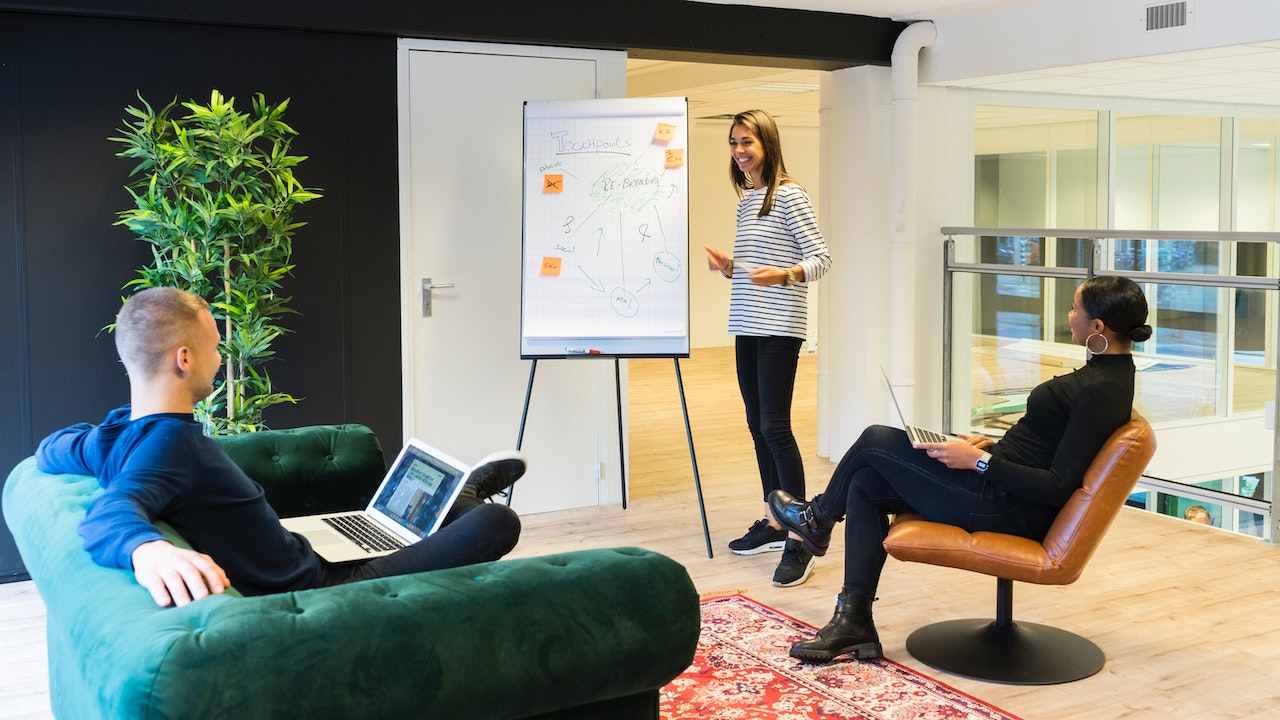Problem-solving is something we do every day. From deciding what to make for dinner when we haven’t grocery shopped to figuring out how to increase our sales by 30% by the end of the month, we constantly run into obstacles in our personal and professional lives.
No one is a master problem-solver right away — it takes patience and time to develop this skill. Practicing problem-solving in low-stakes situations prepares us for when it really counts: a high-pressure setting. Luckily, we know the best ways to practice problem-solving, how to develop your problem-solving skills, and strategies for solving problems quickly and practically.
What is problem-solving?
We can break down the problem-solving process into three main parts: identifying a problem, brainstorming solutions, and taking action. Like any other skill, this process becomes easier with practice. Learning actionable problem-solving techniques can also help us to respond to difficult situations quickly and effectively.
Problem-solving skills are a great help in the workplace — especially for business owners responsible for running all aspects of a business. These skills empower us in both our professional and personal lives and give us the independence to tackle roadblocks on our own — a great asset for solopreneurs.
How to develop problem-solving skills
Practicing problem-solving doesn’t have to be a chore. Here are five exciting ways to flex your creativity and problem-solving muscles:
1. Puzzles and brainteasers
These are fantastic ways to exercise our brains in a controlled and relaxed environment. When we have ample time and no deadlines to brainstorm potential solutions, we’re more likely to try new methods, experiment, and find the problem-solving strategy that works best for us.
Practicing this skill can be as simple as picking up a book of sudoku or sitting down for a crossword every week. Choose activities that you enjoy and make you excited to learn.
2. Games
Board games and video games provide both entertainment and complex problems to tackle. While immersed in the world or storyline of the game, we’re often required to overcome challenges by discovering a step-by-step journey to the solutions.
Strategy games in particular can strengthen our ability to plan and adapt to sudden changes. Because these games are just for fun, we can break down the problem with patience and take as many attempts as we need.
3. Hobbies
Starting a new hobby, like a craft or sport, encourages us to embrace a beginner’s mind and find creative solutions while we learn. Whether it’s knitting or basketball, each new journey is going to have hiccups we must persevere through and overcome.
4. Case studies
If games and puzzles seem a little too abstract to help with professional problem-solving, reading case studies is a powerful alternative. Many case studies published by companies and authors break down the minutiae of problem-solving in real-world settings, including the stress and deadlines of an office environment.
By working through these cases from the comfort of our homes, we learn to consider problems from new perspectives and build the know-how to replicate these strategies — even under stress.
{{mid-cta-product}}
Mastering problem-solving
Once we feel comfortable practicing our problem-solving, it’s time to put our skills into action to tackle real-world problems. Here are four ways you can work more quickly and efficiently in high-pressure situations:
- Make sure you understand the problem and can explain it to others. The first step to solving a problem is knowing it inside and out, and an excellent way to test this is by explaining it to peers or team members.
- Lose the fear of making mistakes. The best solution is the one that works most quickly and effectively for you. There’s no “wrong” answer, and there are likely many viable strategies you could choose.
- Use visual techniques. Good problem solvers understand the methods that work best for them. If staring at words on a page isn’t working, try visualizing the problem through diagrams, mind maps, and other visual tools.
- Reframe the problem as a question you can answer. Thinking of problems as questions allows you to focus on their answers. For example, turn “My clients are upset we don’t communicate enough” into “How can I improve communication with my clients?”
Problem-solving strategies
If you’re looking to really level up your problem-solving, we have three strategies you can implement.
1. IDEAL problem solving
This 5-step process is easy to remember because it’s based on the acronym IDEAL:
- Identify the problem at hand. Ensure you understand the scope of the problem, the facts you already have, and what you need to find out.
- Define an outcome. What does a successful solution look like? Outline an objective that’s agreed upon by you and any other parties involved.
- Explore strategies. This step is where diagrams, mind maps, and brainstorming can come into play. It doesn’t matter how far-fetched an idea seems — write it down anyway.
- Anticipate outcomes. Examine your best strategies and make your best guess at what the outcome of each will look like. Pick a solution from your list based on which you think will be most successful. You can never know for certain what will happen, but you must take a step forward to move the process along. If you fail, turn to your next best strategy.
- Look back and learn. Reflection is crucial to becoming better at problem-solving. After you make a decision and act on it, reflect on the journey and the outcome. Did you achieve what you wanted to? Would another strategy have been more efficient?
2. Practical problem-solving
This 8-step method centers around solving problems in a team setting, though it can be adapted to individual use:
- Clarify the problem. Ensure all your team members are on the same page by discussing the problem and landing on a definition.
- Break down the problem. If a problem is complex, break it down into more manageable sections. This way, you can employ strategies for each facet of the problem rather than getting stuck on the big picture. You and your team are less likely to become discouraged if you can celebrate successes along the way.
- Set a target. Agree on an end goal and deadline for solving the problem. This will keep everyone accountable to the same solution.
- Analyze the source of the problem. Determine the crux of the problem by tracing back to its root cause. Try using a mind map and beginning at the root of issue and tracing backward.
- Develop countermeasures to correct the problem. Brainstorm solutions with your peers and weigh what the most effective methods might be. Like the IDEAL strategy, this is the time to anticipate the outcomes of your solutions and choose the best step forward.
- Act on the countermeasures. Once you’ve chosen your measures, it’s time to implement them. Delegate tasks amongst your team and offer each other support.
- Monitor your progress. Track your team’s progress with milestones or metrics so everyone’s on the same page about the problem’s status.
- Set a standard and share. How often should team members check in? Set clear expectations and ensure the team conducts regular follow-ups to keep everyone updated on the project's progress — and, of course, when the problem is solved.
3. Lightning Decision Jam
This 9-step process focuses on speed and aims to efficiently generate a variety of solutions to a group of problems. The steps are quick and snappy:
- Write down your problems. What issues are you looking to solve?
- Present each problem to the team (if you’re not working alone). Outline a concise overview of each problem.
- Vote on what problems are priorities (or rank them yourself). Number your problems based on urgency and importance.
- Rewrite priority problems as challenges. Translate your top problems into concrete challenges you or your team must overcome. What are the causes and who do they affect?
- Brainstorm solutions. Have a rapid-fire session and write everything down — there are no wrong answers.
- Vote for the best solutions (or rank them yourself). What solutions from your brainstorming are the most practical, efficient, and promising?
- Prioritize the most relevant solutions. Among the popular solutions, which are most relevant? Weigh effort versus impact and consider your individual or team strengths.
- Decide what to act on first. Tackle the easiest tasks with the highest impact first, then work your way to the most difficult actions that will be the least impactful.
- Delegate actions and tasks (if you’re not working alone). You know what you have to do and how to get there, so assign work based on your team’s skillset. Who is the best fit for each task?
The best time to start is now
Unfortunately, there’s no recipe for solving every problem you come across. But practicing your problem-solving will unearth your strengths and weaknesses and teach you the necessary techniques to tackle whatever difficulties come your way head-on. So grab a puzzle, dust off a game, or turn your attention to that issue at work — it’s time to get problem-solving.
Excellent communication is a crucial component of effective problem-solving. Try Practice’s all-in-one client management system today to streamline client conversations and give you back some time to focus on tackling client and business complications.




























